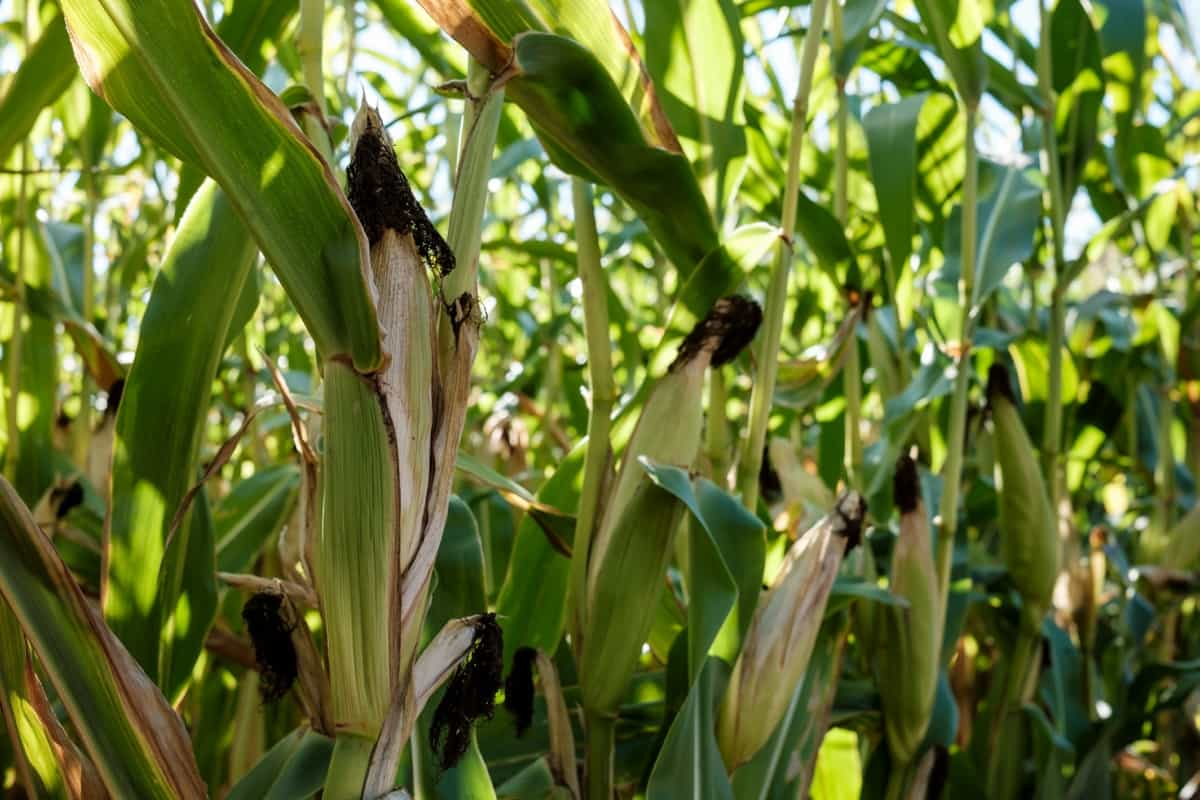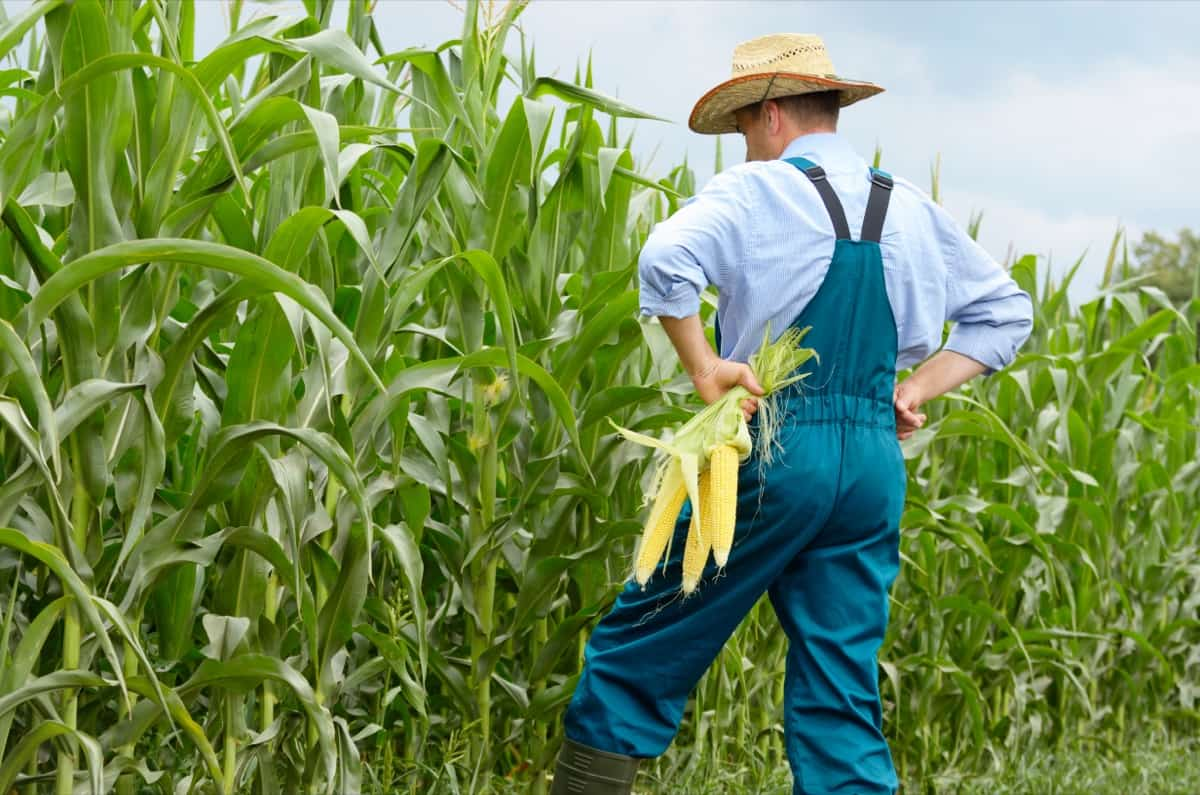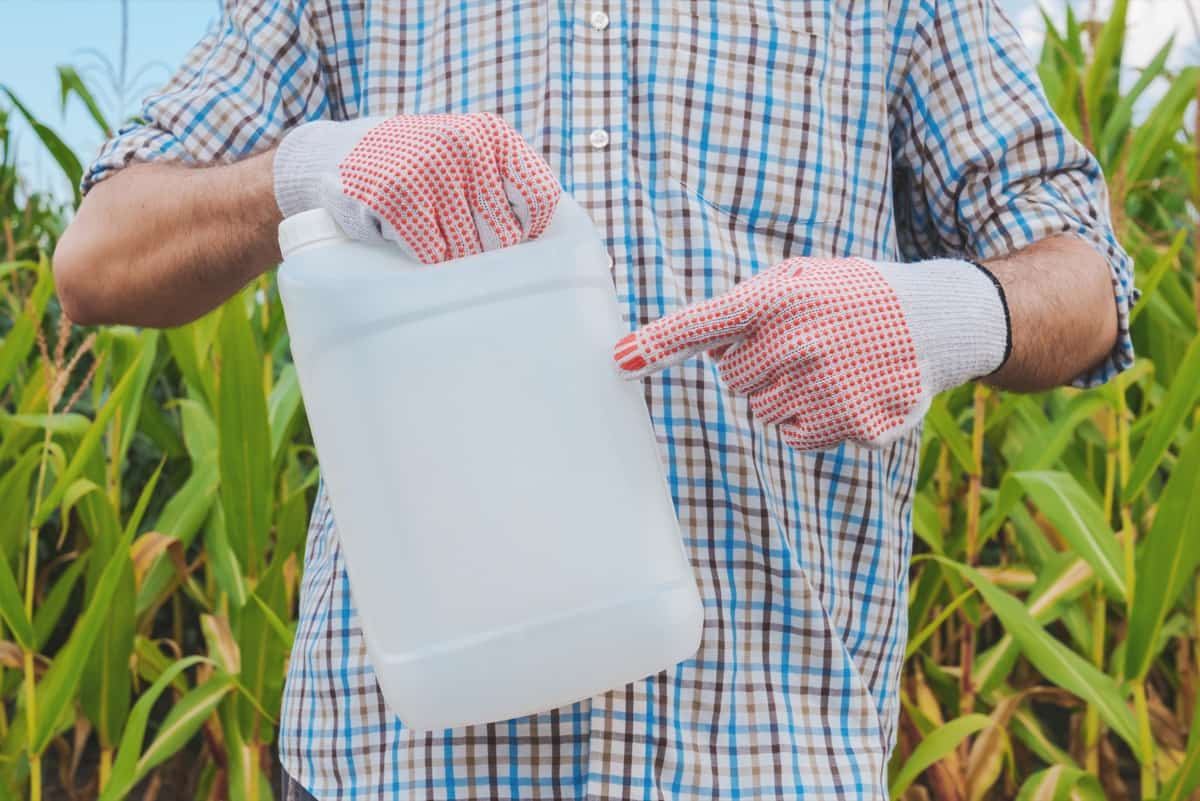Charcoal rot, caused by Macrophomina phaseolina, is a soil-borne fungal disease that affects many crops, including corn. The fungus causes dry-weather wilt in plants by infecting the roots and stem, leading to wilting, stunted growth, and eventual plant death. The presence of microsclerotia in infected tissue is a characteristic of the disease.

Charcoal Rot disease management in Maize
The causal organism of Charcoal Rot disease
Charcoal rot is caused by the soil-borne fungus Macrophomina phaseolina. It has a wide host range, including corn, sunflower, and weeds. The pathogen survives in host residue and dry soil and can be spread through contaminated seeds and soil.
The disease cycle of Charcoal Rot disease
The fungus Macrophomina phaseolina, which causes charcoal rot, has a wide host range, including sorghum, pearl millet, finger millet, pulses, and many other crops. It survives in infected plant debris for over 16 years and primarily infects crops through soil-borne sclerotia. The fungus is a facultative parasite and can live both as a parasite and a saprobe on dead organic tissues. Overwintering as sclerotia in the soil allows it to infect host plants at susceptible stages through their roots and then move up to the stem.
Causes/conditions favorable for Charcoal Rot disease spread in the field
- Hot and dry conditions with temperatures above 85 ºF and low soil moisture favor the proliferation of charcoal rot caused by the fungus Macrophomina phaseolina.
- Cold weather periods followed by hot conditions can preserve infected corn residue, increasing the risk of spread. Drought conditions during corn senescence can cause stress on the crop and make it more susceptible to infection.
- Tillage practices can also increase the fungus populations in the soil if susceptible hosts are grown in successive years, as the fungus can persist in soil for up to three years.
- Insect damage and plant wounding can also make plants more susceptible to fungal infection by creating openings for the fungus to enter.
Symptoms of Charcoal Rot disease
- Charcoal rot first becomes noticeable in when corn tassel stage or later and is characterized by drying out of the plant’s upper leaves.
- Infected plants have shredded stalks and completely rotted pith, with only stringy vascular strands remaining.
- The fungus’s small, black, spherical sclerotia are found on and inside the vascular strands, giving the internal stalk tissue a grey coloring.
- The growth of the fungus disrupts the translocation of water and nutrients as the hyphae grow intercellularly through the xylem and into vascular tissue.
- These fungi can grow in the lower internode stalk as the plant matures, causing premature ripening and weakening of the stalk, leading to breakage, lodging, and yield loss.
In case you missed it: Bacterial Stalk Rot Disease Management in Maize: Symptoms, Treatment, Chemical, Biological, Natural, and Organic Control

Charcoal Rot disease management in Maize by the cultural method
- Early planting and low plant populations decrease the competition for water and nutrients.
- Good water management and adequate fertility reduce stress on the crop and encourage plant growth.
- Insect management to control insect damage and minimize potential points of infection.
- Harvesting early, when the crop is mature, to reduce crop loss due to lodging.
- Crop rotation to non-host crops, such as cereal grains, reduces the disease potential.
- Residue management to decrease the population of the fungus in the soil.
- Hybrid selection uses hybrids resistant to Diplodia and Gibberella stalk rot, as they tend to offer genetic resistance to charcoal stalk rot.
- Long crop rotation with crops that are not natural hosts of the fungus.
- Irrigating crops at the time of earhead emergence to maturity to maintain soil moisture and reduce crop stress.
Charcoal Rot disease management in Maize by biological method
- Soil application of beneficial bacteria, such as P. fluorescens or T. viride, mixed with well-decomposed FYM or sand can help reduce the fungus population in the soil.
- Seed treatment with fungicides such as Carbendazim or Captan can also help prevent infection.
- Planting disease-tolerant varieties, such as SN-65, SWS-8029, Diva, and Zenit, can also help reduce the severity of the disease.
Charcoal Rot disease management in Maize by chemical method
Potash (potassium) fertilization can help promote crop health and resistance to disease, including charcoal rot. Applying 80 kg/ha in areas where the disease is endemic may help reduce the severity of the disease. This is only one aspect of an integrated disease management strategy. Other measures such as crop rotation, residue management, and selection of disease-resistant varieties are also necessary to manage the disease effectively.
In case you missed it: Corn Earworm Management in Maize: Symptoms, Treatment, Chemical, Biological, Natural, and Organic Control

Organic/natural control measures of Charcoal Rot disease
Good cultural practices such as crop rotation, adequate fertilization, and water management can help reduce disease severity. Planting disease-resistant varieties are also recommended as a means of disease control.
Preventive measures for control of Charcoal Rot disease
- Growing disease-tolerant varieties and practicing proper soil management techniques, such as reduced tillage, can also help reduce the spread and impact of the disease.
- Proper nutrient management, including adequate levels of phosphorous and potassium, can also help reduce plant stress and increase plant growth, making the crop less susceptible to infection.
- Lastly, controlling insect damage and harvesting crops early can minimize potential infection points and reduce crop loss from lodging.
Conclusion
Charcoal rot is a fungal disease that affects crops such as corn, sorghum, and pulses, causing significant yield losses. Management of this disease requires a combination of cultural and agronomic practices, including good water management, crop rotation, and disease-tolerant varieties. While there are no registered fungicides to control charcoal rot, seed treatment with fungicides such as Carbendazim or Captan can help prevent infection. Proper implementation of these management practices can help reduce the impact of charcoal rot on crop production.
- Beneficial Insects in Pest Management
- Natural Solutions for Pest Control in Flower Gardens
- Types of Fungicides Used in Agriculture
- Common Issues in the Fruit Development Stage of Pomegranate Farming
- Fruit Development Issues in Papaya: Easy Solutions and Treatment
- Soil-Borne Diseases and How to Protect Your Plants
- Practices to Prevent Disease Spread in the Garden
- From Wilted to Thriving: How to Treat Root Rot Naturally in Houseplants
- Natural Remedies to Cure Brown Spots on Fig Tree Leaves